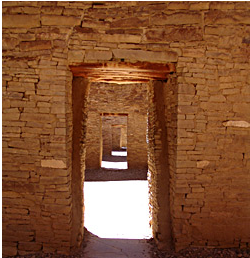Publication Date
7-1-2013
Abstract
This dissertation focuses on developing the means to investigate social organization of communal hunting among egalitarian groups. Communal hunting represents an alternative subsistence strategy that takes advantage of seasonal aggregation of prey species. To maximize returns from these large herds, human foraging groups opt to cooperate with additional groups that otherwise maintain their political independence during the rest of the year. Yet, what is not clear is whether these temporary large camps maintain their egalitarian ethos, giving an equal voice to all members or if the participants adopt an alternative social and political structure. This dissertation uses the case study of the Eden-Farson site to examine whether social inequality, or leadership, arises during pronghorn game drives. The site is located in southwestern Wyoming in the Green River Basin, and based on the archaeological assemblage, is associated with the Eastern Shoshone. A single radiocarbon assay places the occupation of the site at AD 1708 ± 108 years, which places the site within the Proto-Historic period. The site is unique in that there are remains of over 174 pronghorn are distributed among11 discrete house pits. To examine the socio-economics of communal hunting at Eden-Farson, Curtis Storlie and I developed an anatomical bone refit model that can deal with large faunal assemblages. This statistical model has the flexibility to incorporate any number of dimensions as well as account for minor asymmetry that exists between an individuals left and right side bones. In a series of diagnostic tests, the multivariate model outperforms existing methodologies by identifying a greater percentage of true pairs and minimizing the number of false positives. The development of the model was then applied to the Eden-Farson site. Using five skeletal parts from the Eden-Farson sample, 63 refits were visually verified, these inter-household refits linked 10 of the 11 proveniences. This provided strong evidence that these houses were occupied at the same time, which confirms the initial interpretation that Eden-Farson represents a single occupation associated with a single mass kill event. These inter-household refits also indicate widespread food sharing regardless of distance between houses. With evidence indicating coeval occupation, it became possible to compare the proceeds of the hunt between families. To make a comparison of house units, Thaddeus Liebert (UNM Anthropology) and I developed a food utility index (FUI) for pronghorn. Between November 2012 and Feburary 2013, we butchered two does and one buck pronghorn. The butchery collected the mass and processing time for meat and marrow. These values were then converted to energy (kcal) as well as return rates (kcal/hr) per anatomical unit that complements the existing FUI's of other species. Finally, the FUI is applied to the Eden-Farson site to test whether there is a skew in the hunt proceeds. The higher ranked anatomical units were concentrated in the northwestern part of the site. When the spatial patterns of anatomical refits were factored in, House 9 has the highest average value per anatomical unit as well as possessing the third most inter-household refits. While two other proveniences had more inter-household refits, their low ranking in hunt proceeds likely reflects tolerated theft as opposed to redistribution due to payment. The existence of leadership among the otherwise egalitarian Shoshone complements what is known about their social organization of communal hunts. While the extensive refitting indicates the continued practice of food-sharing by means of reciprocity and tolerated theft, the Shoshone chose to adopt a non-egalitarian social organization during the communal hunt. The fact the Shoshone temporarily nominate a leader is not new - there are ethnographic accounts of leadership during communal hunts and fishing as well as winter camps. The identification of leadership or non-egalitarianism in the past provides a new approach to the anthropological debate about the origins of social inequality. While many researchers point to the food production as a key agent in the evolution of institutionalized social inequality, the presence of social inequality among communal hunting suggests non-egalitarian social organization may have greater antiquity.
Keywords
Zooarchaeology, Communal Hunting, Collective Action, Eden-Farson, Pronghorn
Project Sponsors
University of New Mexico's Office of Graduate Studies, National Science Foundation, University of Wyoming's Frison Institute
Document Type
Dissertation
Language
English
Degree Name
Anthropology
Level of Degree
Doctoral
Department Name
Anthropology
First Committee Member (Chair)
Bruce B. Huckell
Second Committee Member
James L. Boone
Third Committee Member
Osbjourn M. Pearson
Fourth Committee Member
Danny N. Walker
Fifth Committee Member
Mary C. Stiner
Recommended Citation
O'Brien, Matthew John. "The Socioeconomic Organization of Communal Hunting: An Archaeological Examination of Shoshone Collective Action." (2013). https://digitalrepository.unm.edu/anth_etds/49

